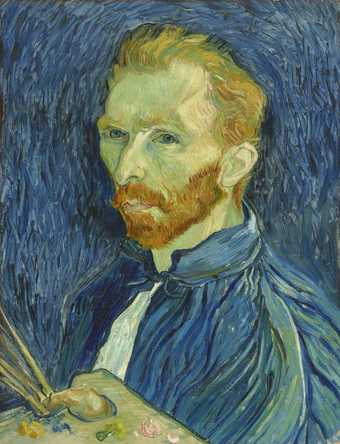You’ve probably heard Van Gogh called 'a tortured genius'. As if his artistic talent was the result of poor mental health or so-called 'madness'
But this perspective is out of date.
After van Gogh’s suicide at the age of 37, his unconventional style was seen as a symptom of illness. From the Second World War, van Gogh has been seen more sympathetically as a hero who struggled against all odds to create his art. Today, we know that this is a myth.
Van Gogh described experiencing ‘low spirits’ and ‘passions’ throughout his life. By the age of 26, he was alienated from his parents, unemployed and living in poverty. He chose to dedicate his life to art, resisting his family's efforts to enter him into an asylum.
Nearly five years later, van Gogh moved to the quiet town of Arles. The sun, people and scenery were inspirational and he painted some of his best-known work there. He wrote: ‘I want to reach the point where people say of my work, that man feels deeply and that man feels subtly’.
It was in 1888 that van Gogh experienced the first of eight episodes or ‘crises’, as he called them. He experienced extreme anxiety, memory loss, partial paralysis and he started hearing and seeing things. During the first of these episodes, van Gogh severed his ear and was hospitalised.
After his third episode, he admitted himself to an asylum.
The idea that creativity was linked to ‘madness’ was well known at this time, but Van Gogh rejected it, he came to ‘consider madness as an illness like any other.’ He insisted on continuing to paint. There was little treatment available at the time in the asylum. He was given bromide and therapy baths.
The episodes became more frequent. In 1890, he decided to leave the asylum to live in a village closer to his brother Theo. At this time, he created a new painting almost every day. He wrote:
‘Work distracts me infinitely better than anything else, and if I could once really throw myself into it with all my energy that might possibly be the best remedy.’
However, in July of that year, van Gogh shot himself and died two days later. Suicide was then a crime and so he was buried quietly.
Framing Van Gogh as a mad genius reduces him to his mental health and illness. He wasn’t a great painter because of poor mental health. Nor did he allow it to stop him painting.
Today, 1 in 4 people experience a mental health problem every year. Half of them say the associated shame and isolation is worse than the condition itself.
As Van Gogh’s story shows, mental health does not and should not define who we are.
If you are affected by the content in this video click the links below for more information and support.





